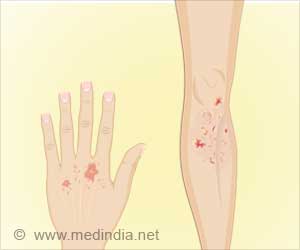Snakebites in India are now a notifiable disease, aiming for better prevention and treatment.

India has officially recognized snakebites (1✔ ✔Trusted Source
Snake Bites: Treatment & Prevention
) as a serious public health issue, with the Ministry of Health and Family Welfare declaring it a “notifiable disease.”
This accounts for half of all snakebite deaths globally. However, the cases are grossly underreported.
Snakebites Pose Public Health Risks
“Snakebites are an issue of public health concern and in certain cases, they cause mortality, morbidity, and disability. Farmers, tribal population, etc. are at higher risk,” said Union Health Secretary Punya Salila Srivastava, in a letter, addressed to the Secretaries of Health of all States and Union Territories (UTs).
“You are requested to make snakebite cases and deaths a ‘Notifiable Disease’ under the relevant provisions under the State Public Health Act or other applicable legislation”. The letter urged all government and private health facilities (including medical colleges) to “make it mandatory to report all suspected, probable snakebite cases and deaths in the enclosed format”, read the letter. The common krait, Indian cobra, Russell’s viper, and saw-scaled viper are responsible for about 90 per cent of snakebites in the country.
While polyvalent anti-snake venom (ASV) — with antibodies against these four — is effective in 80 per cent of cases, the lack of trained human resources and health facilities to treat snakebite patients remains a cause of concern. Other major hindrances are the lack of data on incidence, morbidity, mortality, socio-economic burden, treatment patterns, etc. In March, MoFHW launched the National Action Plan for Prevention and Control of Snakebite Envenoming (NAPSE) to address the issue of snakebite.
The action plan aims to “halve the snakebite-related deaths by the year 2030”, Srivastava said. The plan carries defined strategic components, roles, and responsibilities of stakeholders involved in snakebite management, control, and prevention. A key objective of NAPSE is to boost the surveillance of snakebite cases and deaths in the country.
Srivastava called for developing a “robust surveillance system for accurately tracking snakebite incidents and deaths”. This will provide valuable data to inform and evaluate the effectiveness of interventions. It will also help the stakeholders understand “accurate burden, high-risk areas, factors responsible for deaths of snakebite victims,” which in return would result in the improved clinical management of victims, Srivastava said.
Advertisement
Reference:
- Snake Bites: Treatment & Prevention – (https://my.clevelandclinic.org/health/diseases/15647-snake-bites)
Source-IANS



